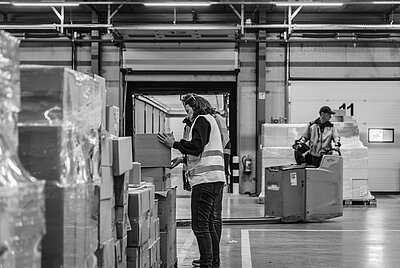But while all of this has huge time and cost-saving benefits for retailers, as we’ve previously highlighted, it’s more important than ever that customers receive exceptional personal service when they are in store and come into contact with your staff. PwC reports that 75% of consumers want more human interaction, not less.
Getting the balance right is crucial if retailers are to provide a satisfying in-store experience but how do you manage it?
Choose your automation carefully
Ensuring that your automation processes complement the customer service experience is imperative. That’s when automation hits the sweet spot in providing assistance and speed. But it’s a fine line. Too much automation can quickly slide into frustration and disappointment for consumers.
Take your processes for example. Self-checkout for people in a hurry is an ideal complement to their retail experience. They can scan, pay and go – or just walk in and out in emerging frictionless stores. But would this work for your returns process? What impact would this have on your customers’ experience of your brand? For more complex processes where it’s helpful for both retailer and customer to have contact, you can’t underestimate the power of a responsive and understanding staff member to help resolve these issues.
There are a plethora of studies to support the idea that when it comes to resolving a complaint, returning an item or needing some extra support where shoppers want another person to deal with.
Consider all of your customers
Even when studies support the want for human interaction in-store from a customer service perspective, it’s important to consider your customer demographics and their needs.
Elderly consumers, people with cognitive illness or impairment and people with disabilities are far less likely to use automated experiences in-store. It can cause distress, confusion and, ultimately, alienation. In fact, British supermarket giant Tesco is currently facing a petition to get rid of automated checkouts because of the problems they cause some of their customers.
British retailer Marks & Spencer has tried to strike a balance for customer assistance. Staff patrol the store with iPads, available and ready for people to stop them and ask for product or inventory information. But all the technology operation is done by its staff. A friendly face combined with automation is a great solution for customers who struggle to use the technology themselves.
Benefits for everyone
When you’re considering using automation in-store, weigh up the benefits and where it will have the biggest impact for consumers while shopping.
Spanish fashion retailer, Zara, has recently launched its largest flagship store in Madrid. It’s crammed full of technology and automation (including automated returns). And while the results of its approach are yet to be seen (the store officially opened on the 8th April 2022), it has adopted an approach that it hopes will get the balance right between human and automation – for the benefit of everyone.
The store aims to offer the same product range that’s available online. Consumers can check out what’s available using an app, both in-store or from the comfort of their home. While the new 7,700m² store has the capacity to do this, it ensures that people looking for an item don’t waste time heading in-store for a product that isn’t in stock. This saves both in-store staff and consumer time. The retailer also offers a changing room reservation service, again bookable from home or in-store, which reduces the need for changing rooms to be constantly staffed> More importantly, it ensures customers don’t have a lengthy wait for a changing room.
Management consultancy McKinsey & Company says in its Rebooting Retail report: “Companies should be thoughtful about how each potential technology can affect their consumer value proposition – which ones are introduced primarily to deliver against expectations, and which may aid productivity but impact on service levels.”
It’s clear that the biggest wins for automation are those that benefit everyone, not just your store.
If you’re looking for help with in-store automation or tighter stock control, speak to one of our account managers to find out how we can help. Ring +31(0) 88 494 20 80 or email online@worldpack.eu


